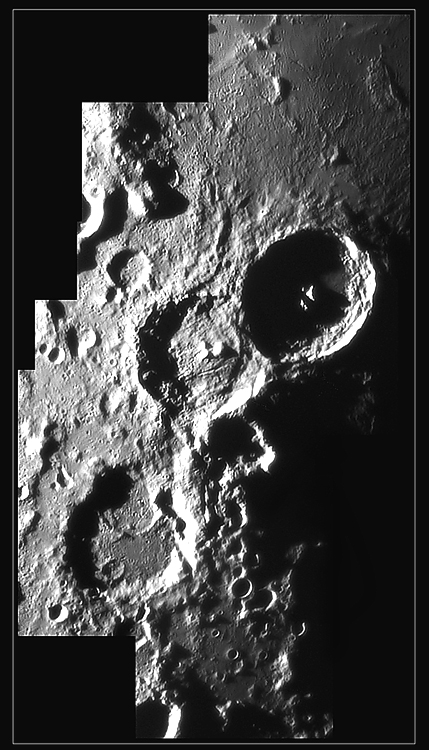
image by Ralf Vandebergh
I hate getting sucked into showing another image of the old warhorses - the great scenes on the Moon (Tycho, Copernicus, Plato and these guys) that we see over and over again. But - always a “but” to explain why I failed again - this is such an attractive view of the classic trio of Theophilus, Cyrillus and Catharina that I want to share it. This picture reminds me of how I used to focus the Russian reflector I had - I would just twist the eyepiece (helical focusser) to maximize the contrast and suddenly tiny sharp details and their shadows would pop into view. Here are some of the things I enjoy when observing this scene. At the top, ejecta from Theophilus pits and scrapes the surface, but notice the smooth gray areas just north of the crater’s wall. These are pools of impact melt that must have been emplaced at the end of the cratering phase for they aren’t pitted by ejecta. Within Theophilus twin peaks jut up out of the inky shadows, and the smooth impact melt covered floor is partially seen. The fractured and uplifted floor of Cyrillus shows it to be a floor-fractured crater. And Catharina has been so heavily cratered that its rim barely rises above the surrounding terrain and it central peaks are missing. South of Catharina are fragments of two inner rings of the Nectaris Basin, and between them smooth non-mare material of uncertain origin. A lot to see in a classic area!
Technical Details:
August 14, 2006. 10 inch Newtonian + ATK-1HS + n-I band 670-1000nm filter
Related Links:
Rükl plates 46 & 57
Now you can support LPOD when you buy ANY book from Amazon thru LPOD!
COMMENTS?
Click on this icon File:PostIcon.jpg at the upper right to post a comment.



